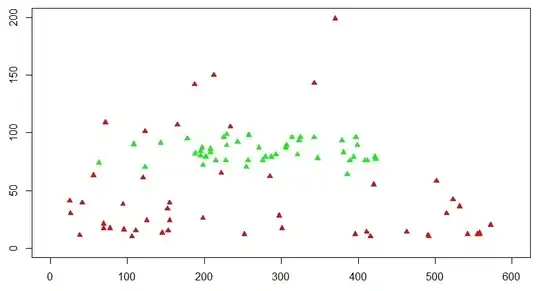I have one dataset of two variables (x,y). When the data is plotted in a 2D diagram, I see some data points create a good cluster (i.e., green points), while the other data points are scattered randomly (i.e., red points).
I am interested in running a clustering algorithm to identify the smaller cluster (i.e., green points) buried inside of other objects or other clusters.
Would you please help me which clustering algorithm typically helps me better in this case? kNN?
Thank you!
